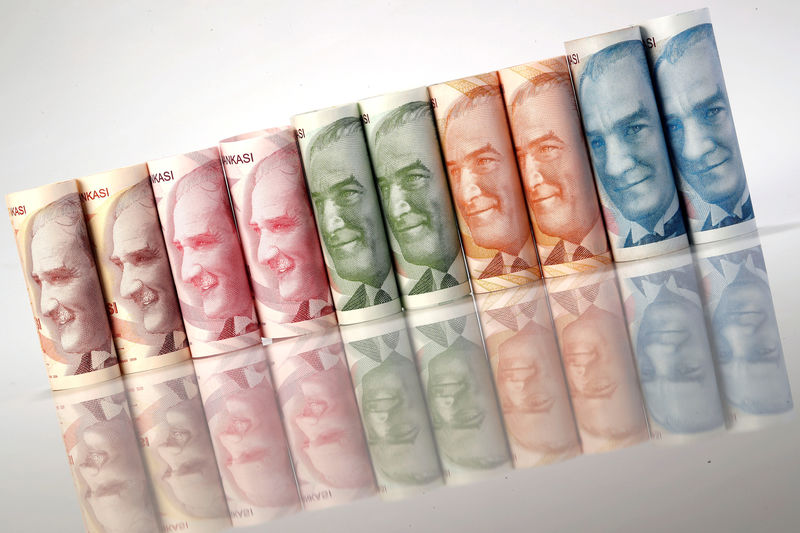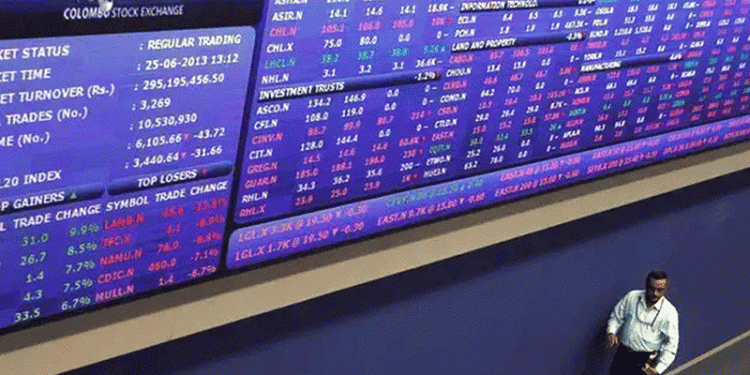 © Reuters. FILE PHOTO: Turkish Lira banknotes are seen in this picture illustration
© Reuters. FILE PHOTO: Turkish Lira banknotes are seen in this picture illustrationBy Karin Strohecker
LONDON (Reuters) – Turkey’s lira has slumped to a record low as worries mount about a toxic mix of geopolitical stress, the country’s increasingly concentrated power matrix and its deteriorating economic fundamentals.
The steadily weakening currency and stubbornly high inflation seem locked into a self-feeding cycle, and there is little sign of a let up for the currency, already one of the worst-performing in emerging markets this year.
Below are five charts showing the pressure points in Turkey’s economy.
1/ UP, UP, AND AWAY?
Inflation has been in double digits every month bar one since February 2017 and remains near the 14-year peak of 12.98 percent hit last November.
Yet facing huge political pressure to slash interest rates in order to fuel economic growth, the central bank has shied away from the orthodox option of hiking rates, eroding investors’ already-thin trust in its independence.
“The market’s confidence in the central bank is really hanging by a thread and is very fragile,” said SEB’s Per Hammarlund. “For now it is not a crisis, but it is on the borderline.”
(For graphic on Turkey Interest Rates & Inflation, click http://reut.rs/2G3dyVi)
With foreign exchange reserves on the decline, the central bank has limited fire power to support the lira. Turkey only really got on top of its hyperinflation problem 15 years ago so the ghosts could come back if Ankara ever starts printing money.
(For graphic on Turkey foreign reserves, click http://reut.rs/2pCnI8j)
2/ RED HOT GROWTH
Turkey has stellar economic growth but the downside is that it has been driven by rapid credit growth, adding to the pressure on the country’s current account deficit – the difference between the value of goods and services it imports and those it exports.
After a downturn following an attempted coup in 2016, the economy is now tearing along at over 11 percent year-on-year – its fastest expansion in six years.
“High growth is a good thing on paper, but then you look at why growth is so strong, and you see all signs of overheating including fiscal stimulus,” said Cristian Maggio, head of emerging markets strategy at TD Securities.
(For graphic on Turkey Credit vs GDP Growth, click http://reut.rs/2pzfC0b)
3/ BALANCE PROBLEM
Unlike other emerging economies, Turkey has not managed to get a grip on its gaping current account deficit, which surged to $7.1 billion in January from $2.7 billion a year earlier.[nEONI390T7]
As Turkey relies heavily on external financing to plug the gap, investors have voiced concern about the type of inflows, pointing to a decline in “stickier” financing, such as long-term loans and foreign direct investment.
“Short-term financing (mainly in terms of trade credits) have been the main sources of funding of the current account,” Bank of America (NYSE:) Merrill Lynch’s Ferhan Salman wrote in a note to clients. “The lower-quality portfolio and short-term inflows constrain the monetary and fiscal policy space, given their sensitivity to carry and real returns.”
(For graphic on Turkey current account balance, click http://reut.rs/2ptw1nx)
(For graphic on fragile five current account balance, click http://reut.rs/2xyQZaU)
(Reporting and graphics by Karin Strohecker, additional reporting by Claire Milhench; Editing by Hugh Lawson)
Source: Investing.com



























